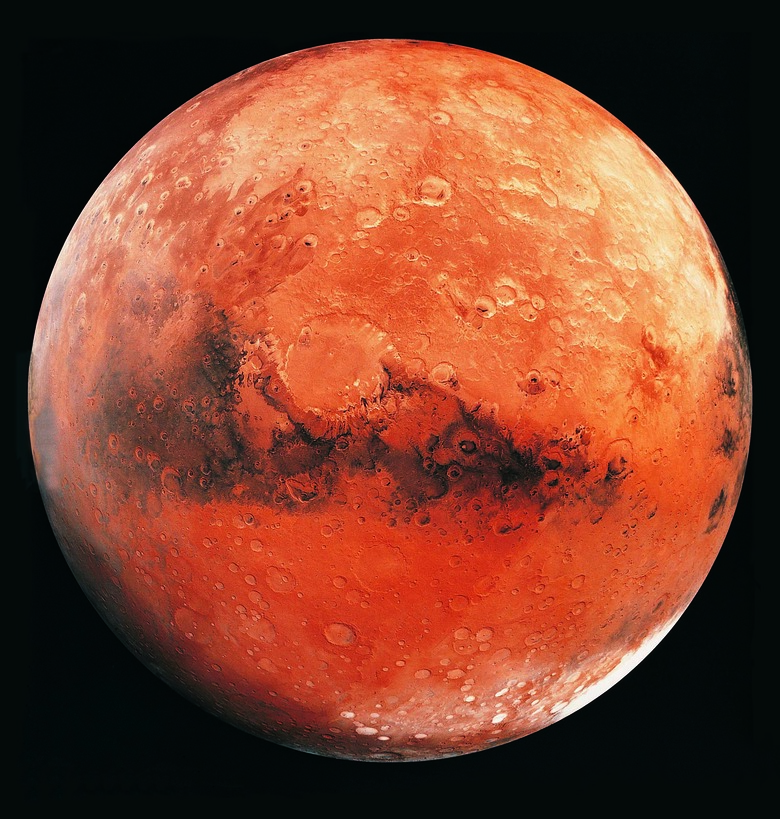What Planet Has A Dust Storm?
Dust storms occur when winds pick up tiny particles of rocky debris from the ground. Such particles may be just a few micrometers in diameter and remain suspended in the atmosphere over periods ranging between a few hours and several months. When they fall back to the ground, their impact loosens more particles from the surface. Scientists have observed dust storms only on Earth and Mars.
Wind
Wind
Planetary atmospheres receive more heat energy from the sun at their equators than at their polar regions. The temperature differences create a pressure gradient. Winds are generated as the atmosphere moves to restore the pressure balance. Excess heat from the equator rises, travels to the poles where it cools, and travels back to the equator. Global wind directions are modified further by the planet's rotation on its own axis.
Mercury and Venus
Mercury and Venus
In theory, dust storms should occur on any of the terrestrial, or rocky, planets – Mercury, Venus, Earth and Mars – with an atmosphere. But Mercury's thin carbon dioxide atmosphere is blown regularly by the solar wind — charged particles emerging from the sun's atmosphere. Dust particles that could have been caused by meteor impact have been observed in Mercury's atmosphere, but no dust storms. Astronomers once believed that dust storms caused Venus' swirling atmosphere. But spacecraft missions have shown it to consist of mostly carbon dioxide with clouds of yellow crystalline sulfuric acid.
Earth
Earth
Dust storms on Earth occur during periods of severe drought. In the United States, dust storms rising like plumes in the atmosphere have been thick enough to hide the land surface and to reduce visibility on the ground. Rising warm air can lift dust to a height of 4,500 meters (about 14,800 feet) from the Sahara Desert in northwest Africa and transport it over the Atlantic Ocean, creating pollution in the Caribbean region. Dust from the Gobi Desert in Central Asia can fall into the Pacific Ocean. As the oceans cannot feed more dust into the atmosphere, the storms quickly die.
Mars
Mars
Mars has the largest dust storms in the solar system. It has a thin carbon dioxide atmosphere whose density is 100 times less than Earth's. Much of its surface is covered in a red-colored iron oxide dust. Winds on Mars are able to support dust storms that blanket the entire planet and last for many months. Dust particles in the air absorb sunlight and warm the surrounding atmosphere, creating winds as they flow to the polar regions. The winds lift more dust from the surface, further warming the atmosphere. Unlike Earth, Mars is a global desert, so dust from the surface feeds further into the storms.
References
- Leeds University: Dust Storms
- Universities Space Research Association: Dust Observation in Mercurial Orbit by Mercury Dust Monitor of BepiColombo
- NASA: Earth Observatory; Dust Storm in Colorado and Kansas
- NASA: Visible Earth; Dust Storm Sweeps from Africa into Atlantic
- NASA: Planet Gobbling Dust Storms
Cite This Article
MLA
Kielmas, Maria. "What Planet Has A Dust Storm?" sciencing.com, https://www.sciencing.com/planet-dust-storm-5099/. 24 April 2017.
APA
Kielmas, Maria. (2017, April 24). What Planet Has A Dust Storm?. sciencing.com. Retrieved from https://www.sciencing.com/planet-dust-storm-5099/
Chicago
Kielmas, Maria. What Planet Has A Dust Storm? last modified March 24, 2022. https://www.sciencing.com/planet-dust-storm-5099/
